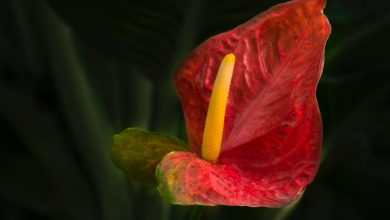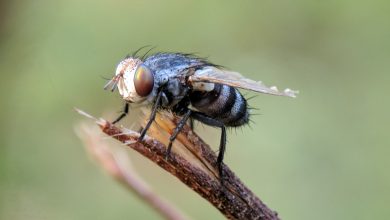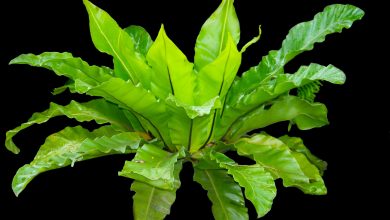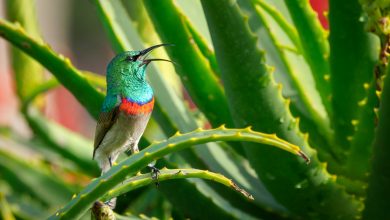Planting and Growing Roses in your Home Garden
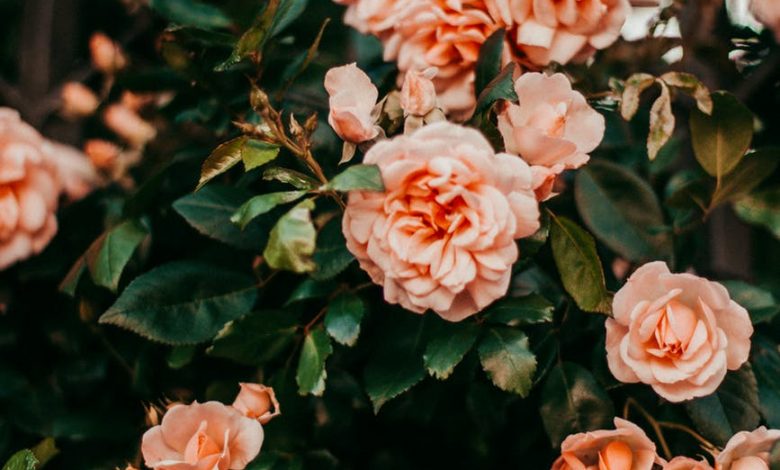
History of Roses
Roses have a very colorful and long history. They have been symbols of war, beauty, politics, and love. According to fossils evidence, roses are around 35 million years old. Roman emperors used to grow roses extensively in the Middle East. They were used for medical purposes, as well as confetti at festivals and in preparation of perfumes.
In the fifteenth century, roses were used as a symbol for the factions fighting to control Britain. The Red Rose was the symbol of Lancaster and White Rose for York. Consequently, the conflict became known as the “War of Roses.”
In seventeenth-century, roses were high in demand. They were often considered as barter and for payments. In the eighteenth century, cultivated roses were introduced in China and Europe. Most present-day roses can be traced back to this ancestry.
Roses are trendy, especially old garden roses and shrub roses. Roses that do not possess any disease control element offer excellent floral quality and have good winter hardiness.
Types of Roses for Home Gardening
The American Rose Society has recognized 37 classes of roses. And within these classes, there are over 150 species and thousands of hybrids. Roses are amazingly diverse in terms of color, form, vigor, and fragrance.
Some rose species are compact enough to grow in containers, while others are perfect for climbing up a wall.
I have shortlisted eight classes of roses that are best suited for home gardening.
- Climbing Roses
These types of roses are vigorous shrubs with arching, stiff, long, and thorny stems. These can well adapt to training on pillars, fences, walls, and arbors. They produce a large quantity of big, clustered, and fragrant flowers.
Most Climbing Roses repeat flowers throughout fall and summer. Some cultivars bloom continuously throughout the season — these flowers require consistent care as well as annual training and pruning.
- English Roses
These roses are very popular for their fragrance. English Roses provide a diverse color range with repeat-flowering habit. These roses offer reliable garden performance, full bushes, vigorous growth, disease resistance, and season-long bloom. There are around 200 English roses available in the market. Their grace and fragrance make them an ideal candidate for home gardening.
- Floribunda Roses
The word “Floribunda” means a profusion of flowers. These flowers are borne in large clusters on strong stems.
The blossom is relatively smaller as compared to other flowers; however, they are produced in larger quantity, which makes a significant impact. These flowers are disease resistant and easy to take care of.
- Grandiflora Roses
These roses were created in the last century to classify between Floribunda roses and Hybrid Tea roses. However, these roses do not perfectly fit any of the categories.
These roses provide graceful blooms like Hybrid Tea roses and repeat growth like Floribundas. They have large, showy flowers and look very elegant in home gardens.
- Groundcover Roses
These are trailing and spreading shrub roses, with glossy leaves and prickly stems. They bloom nonstop and are used in home gardens for their fragrance. They require very little care and are extremely disease resistant.
- Hybrid Tea Roses
These are the most prized cut flowers. These flowers are gorgeous, perfectly formed, along with a long and elegant stem. These flowers are available in an extensive range of colors with a delightful fragrance. These roses provide repeat flowers throughout the year. However, these roses require extra care and maintenance.
- Rambling Roses
These roses provide a spectacular sight when they are in full bloom. They produce a lot of small flowers, often very fragrant. They can produce up to 20 blooms per stem. They cannot produce repeat flowers; however, this is compensated by the huge quantity of flowers they produce. These flowers require less care and maintenance as compared to other flowers.
- Shrub Roses
They are the cross of Modern Roses and Old Garden Roses. These roses provide a large variety of color, fragrance, size, and growth habit. Usually, these roses are robust, reliable, and disease resistant.
They provide repeat blooming from late spring to mid-fall — generally, heavy blooming along with small flowers. The quantity of flowers is tremendous. This rose class requires less maintenance and is easy-care plants.

How to Select Garden Roses
There are hundreds of beautiful roses, way more than any of us will ever get the opportunity to see. When you are selecting a rose for your garden, there are five considerations that will make the selection process much easier.
- Growth habit
- Bloom time
- Stem length
- Disease resistance
- Hardiness
Growth Habit
The rose plant is usually planted for its beautiful flower. It is essential to know what the flower will look like, so you can determine whether it will fit in your garden or not.
Floribundas and hybrid teas usually do not grow more than two to three feet high. They are hardly very appealing, and their form is coarse; however, they can produce a lot of flowers throughout the season.
Miniature roses can only be 10 to 35 inches tall. They have tiny flowers that are produced in clusters. Shrub roses, ground cover roses, or landscape roses are generally leafy and large.
It is essential to get to know the growth habits of the rose plants to make sure that it fulfills your expectations. If you are expecting an abundance of repeating flowers and planted a rose type that cannot produce repeating flowers, it can disappoint you.
Bloom Time
Roses like old fashion varieties have just one flush of bloom in a year. And some rose types can produce a cloud of heavenly pink blossoms for three weeks in June. This depends on your choice of bloom. If you want evergreen roses that can produce an abundance of flowers, then a large variety is available in the market.
Stem Length
This may look like an odd consideration; however, it is essential if you are planting roses for cutting. Hybrid tea is the traditional florist rose, and it is the only type of rose that has a flower on a stiff, long stem. All other roses have weaker and shorter stems.
If you are planting the rose plant for cutting and gifting purposes, the stem length plays a vital role in it. So you must consider this as well.
Disease Resistance
Planting a disease-resistant rose is the most effective way to avoid issues and the need for chemicals. You can consider some old rose varieties which have natural disease resistance properties. Many modern roses also provide the same characteristics, which are bred in a way for improved disease resistance.
Therefore, if you cannot handle the headache of spraying medicines in your home garden, you should go for disease resistance rose plants.
Hardiness
The health of the rose plant is highly dependent on the zones (north and south). Both northern and southern gardeners must know what zones are recommended for each rose plant variety. Some roses perform very poorly in cold climate, and some are made for such weather.
Therefore, before planting the desired rose plant, always check if it is compatible with the climatic conditions or not. Try to purchase the rose plant from a regional or local grower. They will be able to give good advice based on experience.
Planting
If you are planning to order bare root roses via a mail-order company, then it is highly recommended to order early, i.e., in late winter or early spring. Bare root roses are usually shipped in spring because, at that time, plants are fully dormant.
They might look like a bundle of sticks on arrival because they have leafed out. They are not dead. Make sure that packing material is damp and keep them in a dark and cool place before they are ready to plant.
However, if you are considering to purchase container-grown roses instead of bare-root roses, then it is best to plant in early summer or by late spring for best results, although you can plant the container-grown anytime during the year.

Choosing and Preparation of Planting Site
The development of roses depends upon the amount of time they receive the sunlight. Therefore, plant the roses where they can receive at least six to seven hours of sunlight per day. The morning sun is the most critical one because it provides the opportunity to leave to get dry, which, in return, helps prevent different diseases.
If the plant is not receiving enough sunlight, then it might not die at once; however, it gets weaker gradually and produces subpar blooms and overwintering poorly. You need to understand the relationship between the position of the sun and its effect on change in light throughout the year.
Always choose a site that offers full sun year-round. The more sunlight your plant will receive, the more flowers it will produce. In a cold climate area, try to grow roses close to the foundation of your home. This will protect the plant from extreme cold. You can also plant around walkways – provided there is full sun.
Roses require a special type of soil that can drain well but also holds onto moisture long enough so that roots can absorb some. The most common mistake beginners do is they do not provide adequate drainage. Roses cannot sustain in highly wet soil.
Experts recommend using a loose, loamy soil leaning toward sandy. Roots might become waterlogged if there is too much clay. Similarly, if you are planning to plant more than one rose plant, do not overcrowd because the rose plants require proper air circulation to blossom properly.
You also need to run some pH test for soil. The preferred pH range is 5.5 to 7.0. However, you can also plant the rose plant at a 6.5 pH range. It will be slightly acidic to neutral, but works for home gardening.
Planting Roses
You need to wear gardening gloves to protect your hands from prickly thorns. Have all the planting tools and buckets of water near you. Before planting, soak the bare-root roses in the water bucket for almost 9 to 12 hours. However, if you are planting the container-grown roses, loosen the roots nearly 2 hours before planting.
The quality of the rose plant also depends on the depth of the planting hole. Make sure to dig a much bigger hole than you think you would need. Usually, 15 to 18 inches wide planting holes work well. For better results, you can add organic matter like compost or aged manure.
You should mound up the loose soil around the canes, so the rose plant is safe during its acclimation to the new site. Overcrowding of rose plants is not recommended because it can block the air circulation, which is essential for plant growth. Roses must be planted almost two-third of the expected height apart. However, you can plant miniature roses more close as compared to old garden roses.
Watering the Roses
Newly planted roses should be watered very diligently. If it is dry summer weather, you should soak the root zone of the plant at least twice a week. Shallow sprinkling may encourage the fungus and would not reach the deeper roots. Therefore, shallow sprinkling should be avoided.
You can reduce the water supply during fall, but make sure that it is not making the roses dry out. Roses do love water, but it does not mean that you should drown them. They might die if they have sat in water during the winters. You should provide fertile and loose soil along with good drainage, which is ideal for roses.
You can also apply mulch, which will help in conserving water, encourage good health, and reduce stress. You can apply a two to four-inch layer of shredded and chopped leaves, shredded bark, and grass clippings around the base of the rose plant.

Feeding the Roses
You can use artificial liquid fertilizers, which promote plant growth that is tender and soft. These types of plants can also attract aphids and other pests. Therefore, it is highly recommended to rely on natural fertilizers and compost to feed the plants throughout the blooming cycle.
You can also apply a balanced granular fertilizer once a month between April and July. Take half to one full cup for each bush and sprinkle around the drip line. Avoid sprinkling on the stem.
You can add a tablespoon of Epsom salts along with the fertilizer. The magnesium sulfate is very beneficial for the new growth from the bottom of the bush. Some experts also recommend using banana peels because they are a good source of sulfur, magnesium, calcium, and phosphates, which are very healthy for the growth of roses.
However, it might take a much longer time for your rose to reap the benefits from banana peels as compared to pure soil amendments. You can serve them up in three different ways:
- You can lay the strips of peel at the base of each bush.
- You can chop the peels and seal them in a jar of water for two weeks, and pour the solution under each bush.
- You can use a burry, a mushy, black banana next to each bush.
Pruning Roses
Pruning is the process of trimming the bush or plant by cutting away the overgrown or dead stems or branches. It encourages the growth of the plant. You need to be astute during pruning, especially during autumn. Too hard pruning in autumn can damage the plant beyond recovery.
Instead, you should wait for the spring season when plants begin to leaf out for the new season. You need to be patient because roses often take longer times to respond to spring’s warming temperature. Give your plant time to grow the leaf buds before pruning.
Remove all diseased or old plants. Rose plants are very thorny, so you need to wear hand gloves to protect your hands from a clumsy slip. Safety goggles are recommended because rose plants whip back when released.
Try to avoid cutting or moving roses in the summer season because they can suffer and die at high temperatures. Smaller rose canes can be cut back by 6 to 12 inches, whereas large ones to as much as two thirds. You should use pruning shears for smaller growth.
However, you can use long-handle shears for half an inch thick growth. A small pruning saw is very handy because it can cut from both directions, i.e., push and pull. The primary purpose is to keep the plant neat so that it can absorb maximum sunlight and air for the best growth of flowers.
Keep the beds neat and clean. Each leaf contains a growth bud; therefore, when you remove the old flower blossoms, it encourages the plant to make more flowers. Through this, energy is not wasted in making seeds only. Remove any waste around the bush that can cause diseases.
Later in the season, avoid deadheading the roses so that hips can form on the plant and can be harvested and dried on screens. Store them in an airtight container. Also, avoid deadheading all the rose bushes four to fifth weeks before the first hard frost. It will encourage new growth even when shoots are damaged by cold.
Winterizing the Roses
You have to cut off the dead and diseased canes in the fall; pruning is not required. Regular cleaning of rose beds can prevent the overwintering of diseases. Experts recommend a dormant spray for fungus control.
Do not use fertilizers five weeks before the first fall frost. However, continue watering during the dry fall weather. It will keep the plant healthy during the dry winter. It is a good idea to add some compost around the plant after a few touches of frost. Cover your plant with a mesh cylinder to protect from freezing winter.
You can also fill the enclosure with compost, dry wood chips, pine needles, chopped leaves, and mulch. Avoid using maple leaves for mulch because they can promote mold growth.

Essential Tools for Home Gardening
We have compiled a list of seven tools that are essential for home gardening.
- Oscillating Hoe
It is a long-handled garden hoe with a swivel head. It enables you to hoe the entire raised bed from the same position.
- Golden Gark
It is a multipurpose maintenance tool for the garden. It is a shovel, rake, and soil sift in one; a lightweight tool ideal for clearing up weeds during the autumn season.
- Heavy Duty Hoe
This hoe is an ideal tool for breaking new ground. It makes work more comfortable as compared to shovel and spade.
- Garden Secateurs
A good garden secateurs is an ideal tool for pruning jobs. This is a very affordable tool and ideal for pruning the rose plants.
- Garden Trowel
This is the most used garden tool; therefore, it should have a comfortable handle along with a well-fitted blade.
- Digging Spade
This tool is always needed in the garden. It makes digging much more comfortable and smooth. Experts recommend using a stainless steel spade because a regular spade can easily rust.
- Wheelbarrow
An ideal barrow is strong but light enough to transport when full easily. It is an essential tool for home gardening because it makes soil and water transport much more straightforward.
Home Garden Rose Diseases and Treatments
Roses usually require a lot of care to bloom and grow properly. The most common cause of failure with roses is poor disease control. The most dangerous diseases for homegrown roses are:
- Black Spot
- Stem Canker and Dieback
- Rust
- Botrytis Blight
- Rose Rosette Disease
- Rose Mosaic
- Crown Gall
Black Spot
It is a severe rose disease which can reach epidemic proportions in a season. A fungus, Diplocarpn rosae, usually causes it. It becomes very severe after long wet and warm periods in the spring season. The main symptom of this disease is black spots appear on leaves surrounded by a yellow area. These infected leaves often drop from the rose plant.
This infection can continue throughout the summer. The rose plant becomes stunted and produces paler, fewer flowers. Infected plants can lose all their leave by mid-summer.
Prevention and Treatment: It can be minimized by
- Maintaining a good sanitation
- Removal and destruction of infected canes
- Keeping leaves dry
- Use of fungicide sprays
Stem Canker and Dieback
Cankers usually appear as discolored or dead areas in the rose canes. It can vary in color from dark purple-brown to light tan. It is caused by many species of fungi, including Cryptosporella, Leptosphaeria, and Botryosphaeria.
Fungi enter the healthy canes through wounds caused by improper pruning, hail damage, or winter injuries. Canker can grow until it entirely covers the cane.
Prevention and Treatment: It can be minimized by
- Avoid injury to plant during pruning and cutting
- Prune properly
- Remove and destroy all dead and infected dead portions of canes
Rust
This disease is caused by a fungi species named Phragmidium. Oranged colored spots pop-up on stems and leaves of the plant. Rose rust can attack all parts of the plant except the root part. An orange dust-like substance can appear on the plant surface and the ground of the plant during severe rust.
Prevention and Treatment: It can be minimized by
- Providing good air circulation
- Do not overcrowd roses and prune to keep the center open
- Remove and destroy diseased leaves
- Apply fungus removing chemicals
Botrytis Blight
Rosebuds are often infected by the growth of the gray mold fungus, Botrytis cinerea. It is most active in the temperature range between 62 to 72°F and a moist atmosphere. Diseased flower petals have small and light spots that are surrounded by reddish halos.
Prevention and Treatment: It can be minimized by
- Keeping the area clean
- Providing good air circulation
- Avoid wetting leaves when watering
- Use fungicides like thiophanate methyl
Rose Rosette Disease
It is an untreatable rose disease which is caused by the Rose rosette virus (RRV). Rose plants exhibit reddened growth on the infected branches, and the stem becomes thicker than usual. The stems of the plant can also show abnormal growth of pliable thorns (red or green).
Prevention and Treatment: You cannot treat this disease; however, this virus can be reduced to spread by removing the infected rose plants from the site. Any infected rose should be immediately burned or bagged and disposed of. Always make sure to space rose plants so that their roots do not touch each other.
Rose Mosaic
Rose mosaic virus (RMV) symptoms are highly variable. Ring dots and yellow wavy lines will appear on some rose plants during the growing season. These symptoms are most evident during the spring season. Mosaic and yellow net symptoms on leaves are also associated with the Rose mosaic virus and belittle the overall quality of the rose plant. This virus weakens the infected plant, and roses become more sensitive to damage towards low temperatures, drought, and other stresses.
Prevention and Treatment: Although virus-infected plants cannot be saved, you can protect the other plants from getting infected by removing and destroying the infected plant. Always purchase healthy plants from a reputable dealer and never buy plants showing any mosaic symptoms.
Crown Gall
It is usually caused by a soil-inhabiting bacterium, which can affect many ornamentals in the home garden. The main symptom is swelling or rounded galls that occur just below the soil surface on roots or stems. These galls are near white or light green at an early stage. They darken and woody with the time, ranging in size from small to several inches across. These galls interrupt in the water and nutrients traveling up from the stems and roots, which ultimately weakens the top of the plant.
Prevention and Treatment: You have to select disease-free roses to prevent crown gall. This disease cannot be controlled with chemicals. Nothing can be done once the plant is infected. Bacteria enter through the open and fresh wounds; therefore, you need to be careful during planting and cultivating to avoid injury to roots and crown.
Make sure to remove the soil as well where the infected plant was located. Disinfect all the tools used for pruning and cutting near crown gall.

Conclusion
Before planting the roses, you should have complete knowledge about their behaviors in particular climatic conditions. A cold temperature plant might not grow or survive in extremely high temperatures. Therefore, it is suggested to purchase the rose plants from a local or regional supplier who can supply the plants suited for the particular climate.
Sunlight is the most critical element for plant growth. The more the sunlight, the better the growth of the plant. Therefore, choose a site where there are at least eight hours of direct sunlight.
Always choose a plant that suits you. For instance, if you are planting a rose which requires high maintenance, and you are not able to give that much attention, then there is a high possibility that plants might not survive.
Keep the planting area neat and clean and provide proper drainage to the planting site. The rose plants do not like to stand in water; therefore, providing a proper channel for water drainage is a must.
Overcrowding different types of flowers is not a good idea as well because rose plants require proper air circulation, and overcrowding can cause suffocation, which is not good for its health. Always look for symptoms of any disease. Because rose plant diseases are viral, if one plant catches a virus, it will be transmitted into other plants as well.
Therefore, you should provide a gap between plants and make sure that the roots are also not touching. Burn and dispose of the infected plants. You can also change the soil of the infected plant site if possible. Proper pruning and cutting will provide an opportunity for plants to grow more flowers. However, it should be done under the strict guidance of some expert (you can take advice from your local plant supplier).
Always use proper tools for gardening purposes. Wear gardening gloves and goggles because rose plants are very thorny and can injure you easily.
